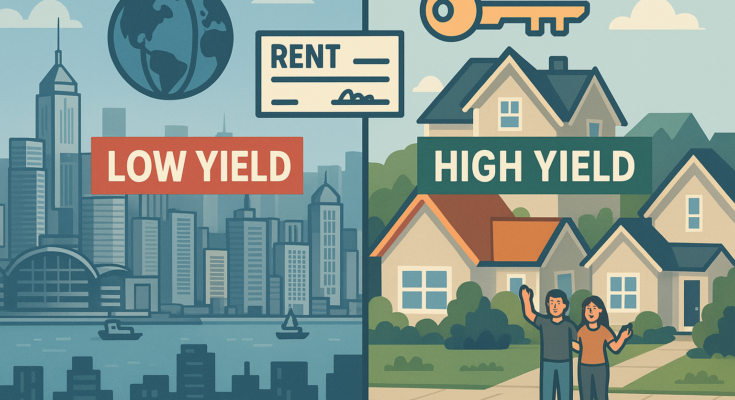The Ultimate Guide to Investment Rentals: Passive Income, Pitfalls, and Where to Avoid
Imagine owning assets that generate steady income while you sip coffee or travel the world. Investment rentals make this possible, offering a blend of stability and long-term growth—if you know where to look. Let’s explore how rental investments work, their pros and cons, and uncover why some of the world’s most glamorous cities deliver surprisingly low returns.
What Is Investment Rental?
Investment rental involves purchasing an asset—like real estate, vehicles, or equipment—and leasing it to a tenant for recurring income (monthly or yearly). The goal? Build a reliable cash flow while potentially benefiting from the asset’s appreciation over time.
Popular Types of Rental Investments
1. Real Estate Rentals: Apartments, villas, offices, or retail spaces. Pro tip: Focus on prime locations and reliable tenants. Stable monthly income plus long-term property value growth make this a classic choice.
2. Vehicle or Equipment Rentals: Cars, construction machinery, or tech gadgets. Pro tip: Prepare for maintenance costs and active management.
3. Commercial Spaces or Parking Spots: High-demand areas near markets or business hubs. Low overhead and steady demand can mean hassle-free returns.
Why Rental Investments Shine
- Passive Income: Earn recurring revenue with minimal daily effort.
- Lower Risk: Less volatility compared to stocks or cryptocurrencies.
- Leverage Opportunities: Use mortgages to finance properties and cover loan payments with rental income.
The Hidden Challenges
- Maintenance & Management: Repairs, tenant disputes, and upkeep demand time or hiring a property manager.
- Tenant Risks: Late payments or vacancies can disrupt cash flow.
- High Initial Capital: Real estate often requires significant upfront investment.
- Market Downturns: Rental demand can dip during economic slumps.
Countries with Shockingly Low Rental Yields (and Why)
Some of the world’s most desirable locations offer meager returns for rental investors. Here’s why:
1. Hong Kong
- Rental Yield: 2% – 2.5%
- Why? Sky-high property prices clash with stagnant rents. A luxury market better suited for speculation than rental income.
2. Switzerland
- Rental Yield: 2% – 3%
- Why? Strict tenant protection laws favor renters over landlords. Plus, limited rent increases cap profitability.
3. France (Especially Paris)
- Rental Yield: 2.5% – 3.5%
- Why? High property prices in Paris meet rent controls and tenant-friendly regulations, squeezing landlord flexibility.
4. Singapore
- Rental Yield: ~2.5%
- Why? Wealth drives property prices up, but rental income lags due to oversupply and competition.
5. Japan (Tokyo)
- Rental Yield: 2% – 3%
- Why? Aging buildings, strict maintenance laws, and a saturated market keep returns low despite demand.
The Root of Low Yields
- Tenant-First Laws: Regulations often prioritize renter rights over landlord profits.
- Overpriced Markets: Property values outpace rental income growth.
- High Taxes & Fees: Ownership costs eat into returns.
Is Rental Investment Right for You?
If you crave steady income and can handle upfront costs and management, rentals are a solid choice. Avoid cities with inflated prices and restrictive laws. Instead, target emerging markets with growing demand and landlord-friendly policies.


